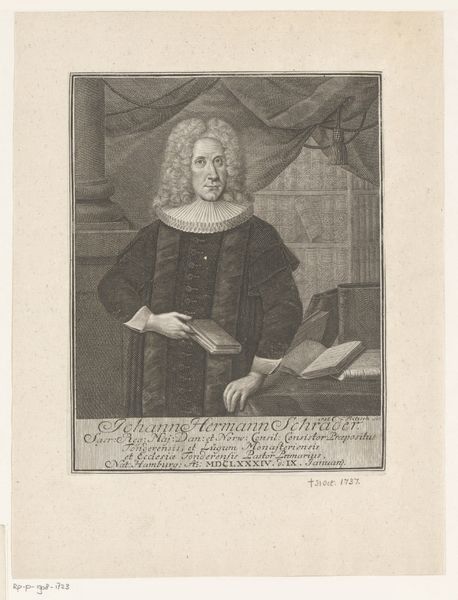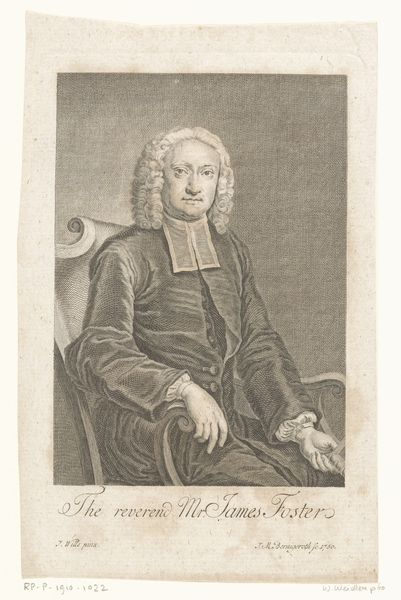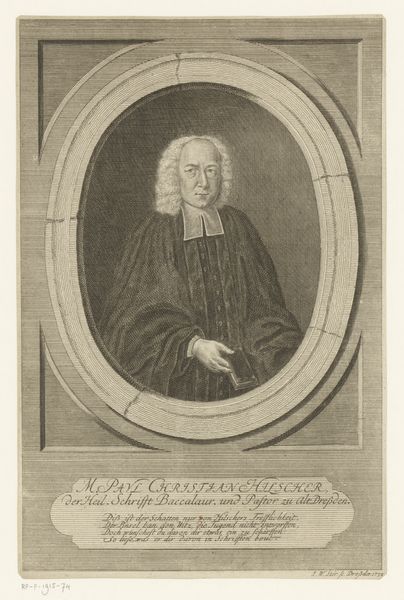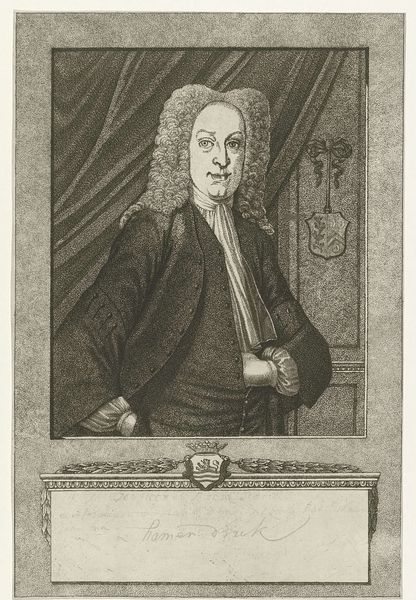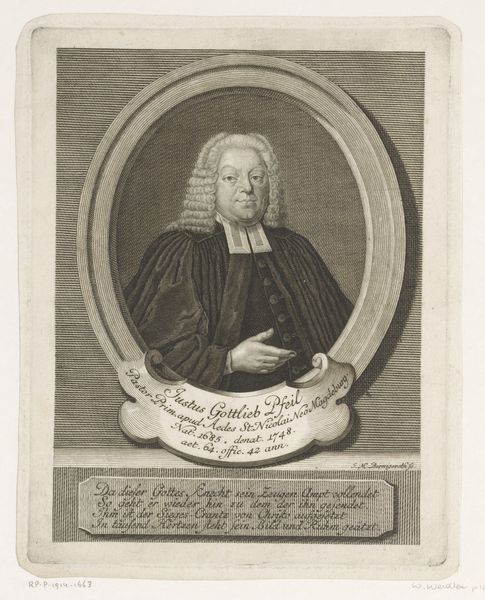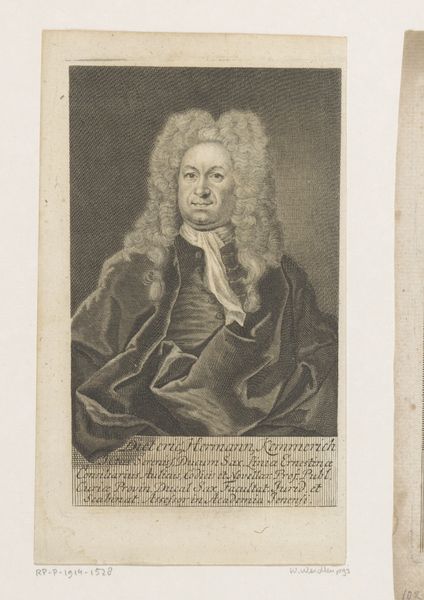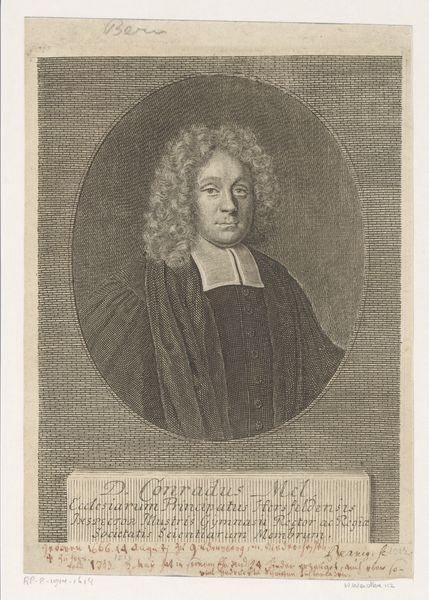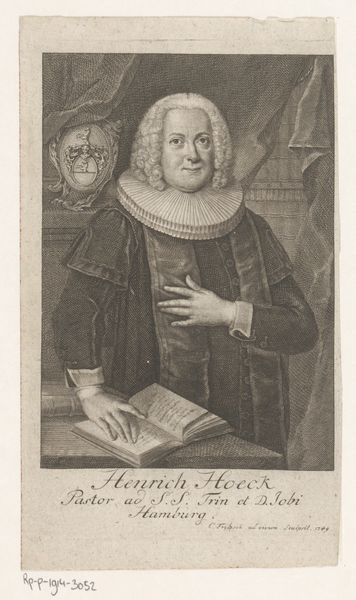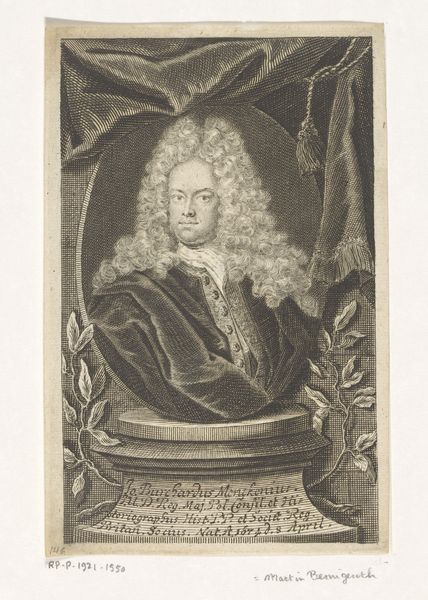
#
pencil drawn
#
aged paper
#
toned paper
#
photo restoration
#
book
#
pencil sketch
#
old engraving style
#
personal sketchbook
#
old-timey
#
19th century
#
pencil work
Dimensions: height 165 mm, width 98 mm
Copyright: Rijks Museum: Open Domain
Curator: This is a piece entitled "Portret van Johann Gustav Reinbeck," created in 1731. It currently resides in the Rijksmuseum. What are your initial thoughts about it? Editor: It gives me a kind of sepia-toned, intellectual vibe. A little…stern? The meticulous detail makes me want to look closer, imagine the room, the scratch of the artist's pencil... even maybe what Reinbeck was thinking. Curator: Absolutely. Let's delve deeper. Reinbeck was a prominent figure, a theologian and royal consistorial councilor. We can consider the artwork in the context of religious authority and the societal power dynamics of 18th-century Prussia. Notice how the composition—his posture, the book—all reinforce his position. Editor: Yeah, the book! Like, "Look at me, so learned, I read!" It's a total power move, and his robe looks luxurious. Maybe even a bit theatrical. Is that harsh? I wonder what that text he is showing off says about the narrative! Curator: Not at all. Think about the visual language of portraiture at that time—these works were often designed to convey specific messages about status and character. His gaze connects directly, almost demanding respect. And let's think, too, about the choices inherent in depicting him with that text; these works were often made with specific audiences and their expectations in mind. Editor: So true, so, he wants to ensure posterity, to give the 'right impression'... This definitely resonates with the social performances we engage in now. The details draw me, however, the old paper, and I wonder what type of paper it is, where it comes from! But also thinking if there were several of these, were they propaganda, and what does propaganda even mean then vs. now? Curator: Right, what it looked like for him to try to control his narrative back then versus our digital contexts today! It is easy to jump to propaganda, but this image perhaps gives us opportunity to understand this history of religious influence as something perhaps a bit subtler! Editor: In the end, it all makes me appreciate that connection to the past, even with the layers of context we're unpacking. Art is just people trying to connect. Curator: I concur. It prompts reflection on representation and identity, in the past and how the dynamics it represents resonate in the present. It underscores the intersectionality of power, faith, and visibility, providing a nuanced view of the era.
Comments
No comments
Be the first to comment and join the conversation on the ultimate creative platform.

